0 Introduction
Sustainable energy aims to provide self-sufficient renewable energy options to rural areas so they can function without relying on traditional power systems.Many countries have prioritized the use of renewable energy sources [1].Many rural areas lack power grid infrastructure,which forces them to rely on costly and environmentally harmful diesel generators for electricity supply.Wind,solar power,and fuel cells are becoming increasingly popular as alternative distributed generator technologies.This is driven by increasing public concern for the environment and continued progress in power deregulation [2].Wind,solar power,and fuel cells have numerous advantages,such as high efficiency,minimum or no emissions,and mobility.These qualities make them appealing choices for future distributed generation applications [3].
SEKEM Farm is a well-known Egyptian agricultural enterprise that engages in organic farming.Several smallscale renewable energy initiatives are being implemented on farms,including photovoltaic stations,hybrid solar dryers,shuffler mirrors for steam production,and solar water heaters.Although there has been gradual progress in energy conservation,performing a company-level energy flow assessment is critical for calculating energy usage.SEKEM’s mission is to transform the disconnected WAHAT Farm into a fully renewable energy-dependent and commercially sustainable organization [4].
SEKEM,in conjunction with Heliopolis University and global collaborators,are actively promoting awareness in Egypt of the significance of transitioning to a more sustainable approach to energy production and consumption.SEKEM aims to achieve complete reliance on renewable energy sources for its energy needs by 2027,if feasible.To address the rising energy requirements of land reclamation activities at the SEKEM WAHAT farm,the objective was to separate energy consumption from production volume growth.The installation of five additional photovoltaic energy systems for pivot irrigation at SEKEM’s WAHAT farm increased renewable energy production.This has increased the share of renewable energy in the entire energy mix from 5% to 16% [4].
Various types of fuzzy controllers,most notably the Sugeno controller,were defined in 1985.Fuzzy rules are linguistic rules that can be used to establish a qualitative control strategy when an expert has a qualitative understanding of the dynamics of the process.In addition to tuning proportional-integral (PI) controllers for improvement [5].
Neuro-fuzzy systems have found a home for a wide range of industrial and commercial applications requiring the processing of imprecise and uncertain data.Fuzzy inference systems (FISs) and artificial neural networks(ANNs) work well in the adaptive intelligent systems design.The ANN learning method involves modifying the connections between neurons.The ability of an ANN to correctly match a collection of previously unknown input data to output data is known as generalization.Additionally,it is a valuable feature of ANNs.The popular computer framework,FIS,is built on fuzzy logic,fuzzy if-then principles,and fuzzy set theory.Using a series of if-then rules,FIS implements nonlinear mapping from its input space to the output space [6].
The ANFIS was solved using the back-propagation gradient descent algorithm and least-squares approach.The difficulty in determining the structure,which involves the type of partitioning,number of membership functions for each input,number of fuzzy if-then rules,and other related factors,is a highly researched topic in this field [7].
This research contributes the following:
· A comparative case study of the SEKEM WAHAT Farm,focusing on the development and implementation of a 100% renewable energy system.
· Various control techniques,such as the proportionalintegral (PI) controller,Fuzzy Logic Controller for PI tuning(fuzzy-PI),and neuro-fuzzy controllers,were evaluated to improve the performance of the microgrid.
· Utilizing a hybrid microgrid that operates independently of the main power grid and integrates various technologies,including solar panels,wind turbines,and fuel cells.
The remainder of the article is organized as follows:Section 1 presents the Modeling of the system under study.Section 2 presents the methodology of the study,and the results are discussed in Section 3.
1 Modeling of photovoltaic (PV),wind and fuel cell hybrid system
WAHAT Farm’s renewable energy capacity reached 1 megawatt in May 2021,at all six pivot watering systems and small hotel [8].As shown in Fig.1,the load in this case was a hotel powered by photovoltaics (PVs).In this study,a simulation of a photovoltaic system was conducted using MATLAB SIMULINK,and the solar irradiance data and wind speed obtained from the sensors at the WAHAT farm are depicted in Fig.2.The system was designed to operate almost entirely on renewable energy,except for an emergency diesel engine with no battery backup [9].Two different sources of renewable energy are used to serve this load: wind energy and fuel cells.The fuel cell acts as a backup during periods of decreased solar radiation,as illustrated in Fig.3.
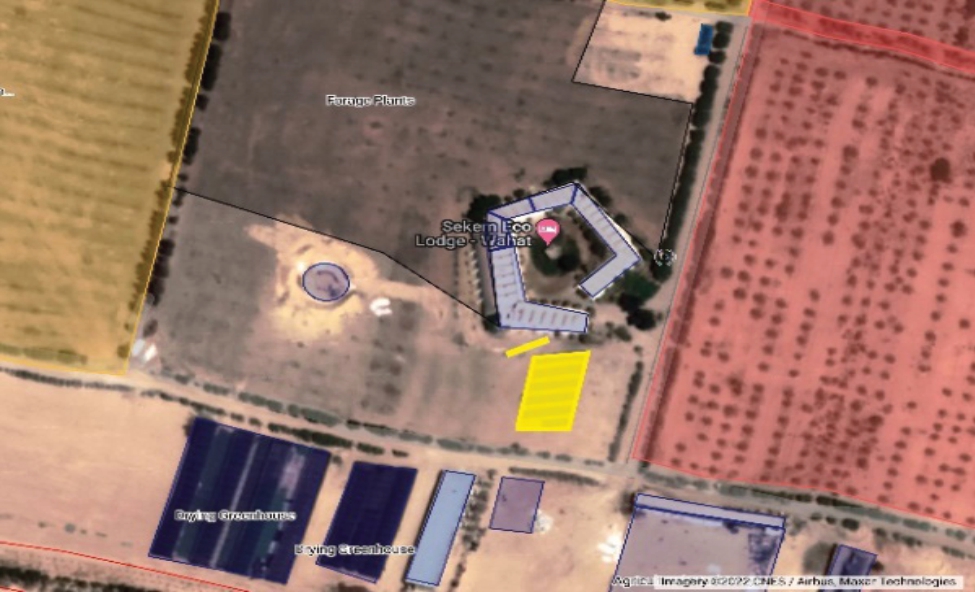
Fig.1 Hotel location
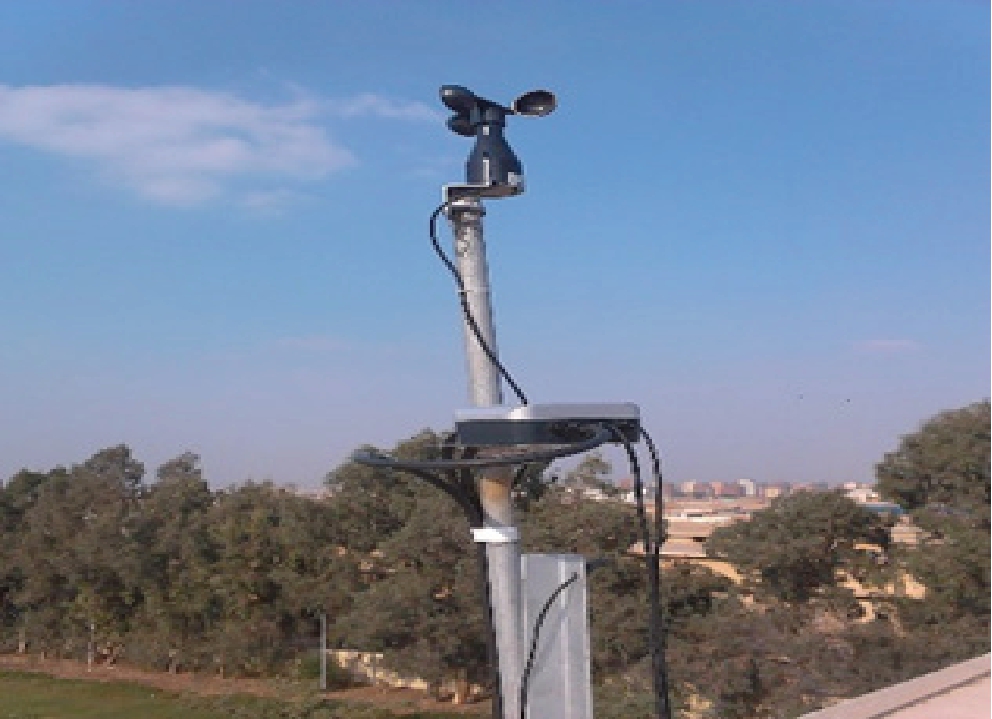
Fig.2 Wind sensor and irradiation sensor
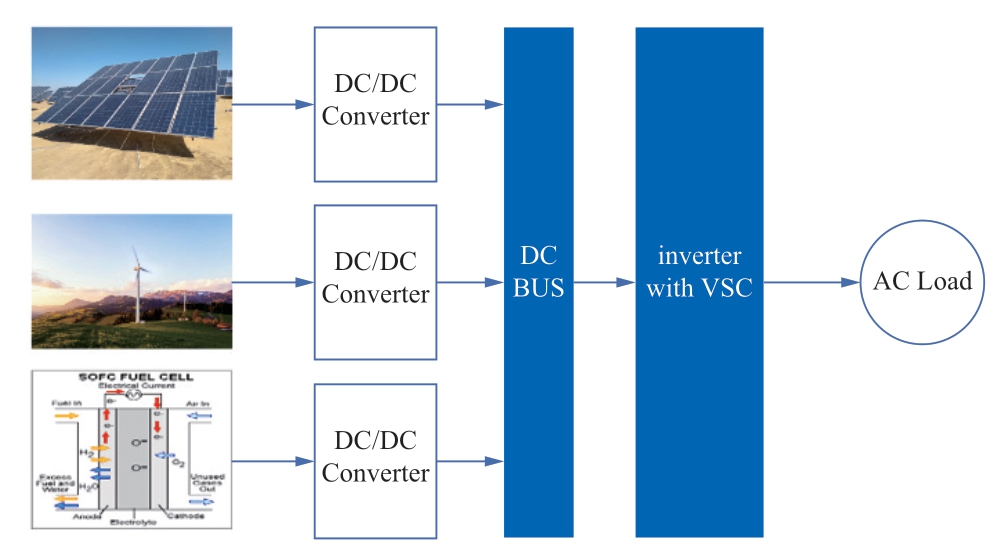
Fig.3 New power model for the selected place
1.1 PV system model
Photovoltaics (PV) have become increasingly popular in recent years because of their availability,ease of installation,and low maintenance requirements.This diminished the annual PV cost,making it an essential Renewable Energy Source (RES).The formula considers the same factors as the mathematical model but is simpler to use.The formula is typically provided by the manufacturer of the PV system,as shown in the Fig.4 [10].
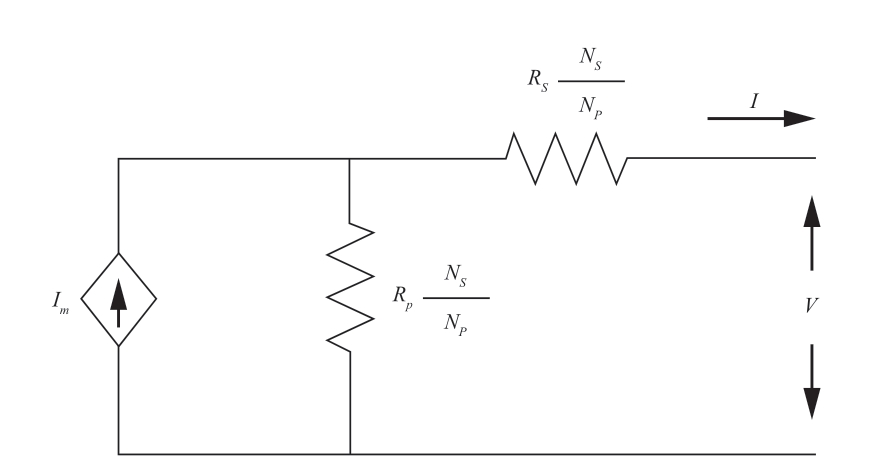
Fig.4 Equivalent circuit of the PV module
ηg: The instantaneous efficiency of the PV generator.
NPV: number of modules.
Am: Area of one module used in the system (m2).
Gt: Global irradiance incident on the tilted plane (W/m2).
The equivalent circuit of the PV module is shown in Fig.4

where Im denotes the module current.Rs and Rp are the array series and parallel resistances,respectively.I and V stand for the array’s output current and voltage,whereas Ns and Np represent the number of series and parallel modules,respectively.The terminal voltage of the array Vt can be determined by [11]:
where a is the diode ideality constant,Ncs is the number of cells in series,q is the electron charge,K is the Boltzmann constant,and T is the P-N junction temperature in Kelvins.IPV is the photovoltaic current and can be expressed by [12]:
Io is the reverse leakage current of the diode and can be calculated [13]:

IPVn: generated current.
Kip: current temperature coefficients.
Kv: voltage temperature coefficients.
Gt: irradiance.
Gn: irradiance at nominal conditions.
Iscn: short-circuit current.
Vocn: open-circuit voltage.
ΔT: difference in Kelvin between the nominal and actual temperatures.
The maximum power point tracking (MPPT) method,based on the maximum power transfer theorem,enhances solar panel efficiency by matching the load impedance to the source impedance.The MPPT device modifies the duty ratio of the DC/DC converter to harvest the maximum power from the solar cell.The Perturb &Observe (P&O)strategy is the most widely used MPPT technique owing to its simplicity and affordability [14].A P&O MPPT system with a Simulink model (Fig.5) was developed using the real irradiance data from a portal connected to an irradiance sensor box in an existing PV system as shown in Fig.6.
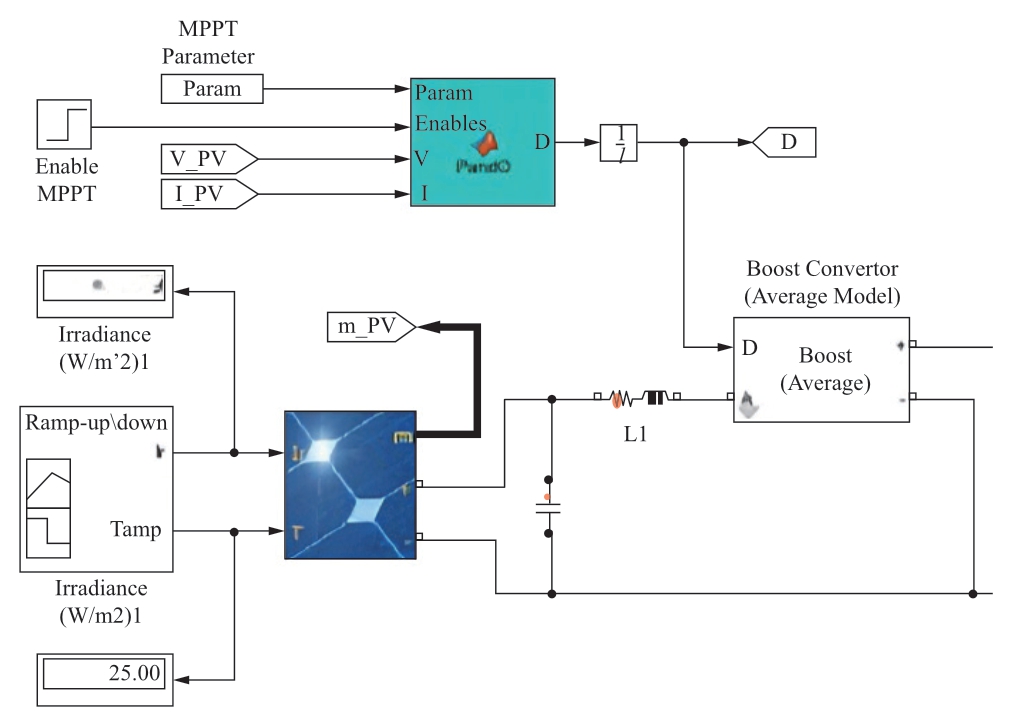
Fig.5 PV Simulink Model
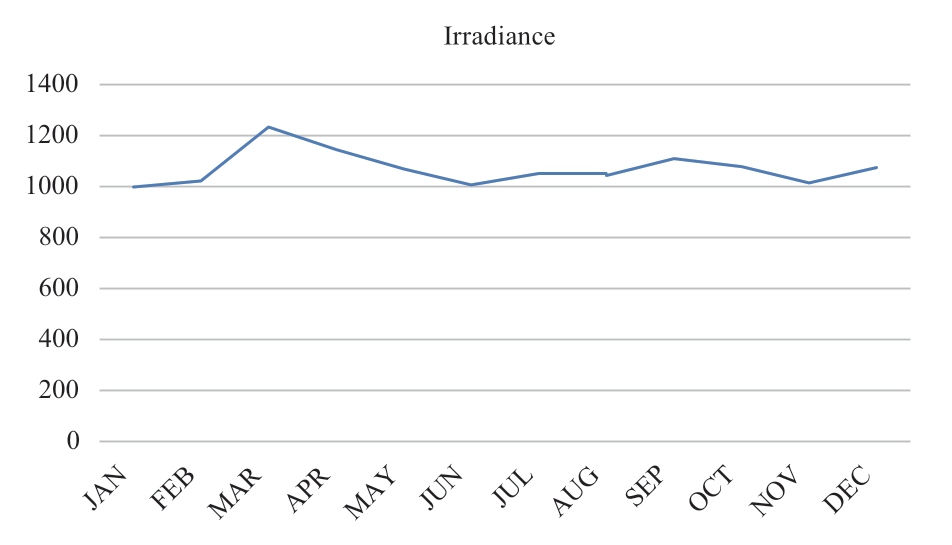
Fig.6 Annual irradiance Data
1.2 Wind generation model
Owing to the massive expenditure on electricity,wind energy generation has become one of the world’s fastest and most significant sources of renewable energy.The fundamental wind energy conversion system model is shown in Fig.7.The wind kinetic energy is first transferred to the rotational motion,which is then matched by a gearbox to the speed of the turbine and generator.The generator transforms the mechanical energy of the turbine into electrical energy [15].
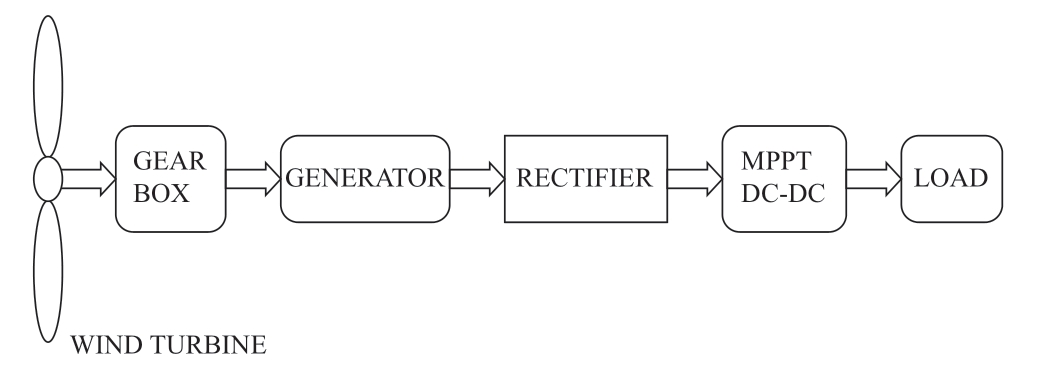
Fig.7 Wind Energy system block diagram
Owing to the wind speed already measured by the wind sensor in Fig.8,which resulted in an average wind speed of 12.4 m/s,the chosen area has significant potential for wind energy.When a generator is connected to a wind turbine,mechanical energy from the wind is converted into power.A mathematical description of the torque and power is provided in [3,16,17].Figure 9 depicts the wind turbine model constructed in the Simulink,where
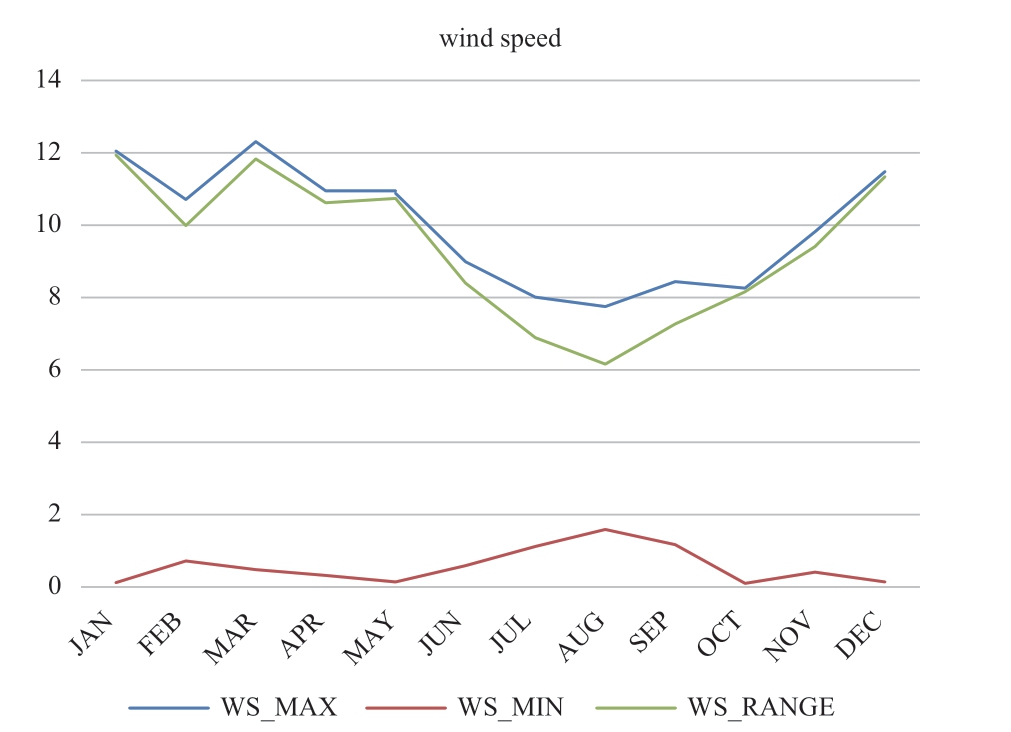
Fig.8 Wind Speed Data measured by wind sensor

Fig.9 Wind Energy Simulink Model
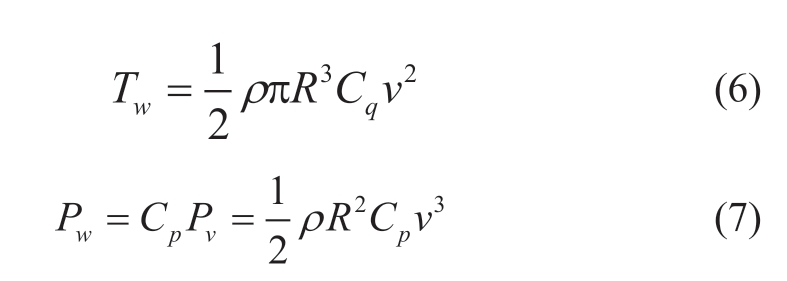
Tw: Torque of the wind turbine
ρ: air density
R: blade radius
Cq: torque coefficient
v: wind speed
Pw: power delivered by wind turbine
Cp: power coefficient
Pv: speed power
1.3 Fuel cell model generation using solid oxide fuel cell (SOFC) type
Renewable energy generators have great potential to hybridize or replace off-grid diesel-based systems.Utilizing locally available renewable energy sources can be an economical and environmentally responsible way to wean off grid communities and their reliance on fossil fuels or avoid unreliable and prohibitively expensive grid connections [18].
In solid oxide fuel cells (SOFCs),carbon monoxide(CO) can serve as a viable fuel.However,when the fuel gas incorporates water,existing configurations and methodologies are employed to increase the CO shift process chemically.The subsequent reaction is referred to as the carbon monoxide shift reaction [19]:
As a result,it is considered that only H2 and O2 go through the fuel cells [20].
The fuel utilization,denoted as Uf,refers to the ratio of the fuel flow utilized for the reaction to the total input fuel flow.
Typically,80% to 90% fuel is used,which results in the equation below [20]:
The fuel cell system can restrict the demand current within a predetermined range,contingent on the hydrogen flow rate provided as the input.
The input fuel flow in a fuel cell system can be adjusted to maintain a Uf 85% because the real output current in a fuel cell system can be monitored [21].
The peak power capacity of a fuel-cell system is the ratio of the maximum theoretical power supply to the rated power.An area with active fuel cells pk should be as large as possible for the maximum total efficiency and dynamic load-following behavior.Because different fuel cell systems have varied peak power capacities,simulations revealed that pk in this fuel cell system model is supposed to be less than 170%,implying that this fuel cell system’s highest power supply is less than 1.7 times its rated power.
The rated power of the SOFC system was anticipated to be 100 kW.The improved model parameters presented in Table 1 account for the inclusion of ohmic losses in the expression for the stack output voltage.This expression is derived by incorporating Nernst’s equation and Ohm’s law [22]:where E0 is the voltage associated with the reaction free energy [V] and R is the gas constant,as previously described.rF describes the ohmic losses of the stack,PH2 partial pressure of hydrogen,while P0.5O2 partial pressure of oxygen,PH2O water,atm,and I is the three-phase current[23].Similar to any new technology,FC-based microgrids are beginning to provide many possibilities.Meanwhile,attempts to access FCs in microgrids met the difficulties shown in Fig.10,the Simulink model of the SOFC.

Table 1 Fuel Cell parameters
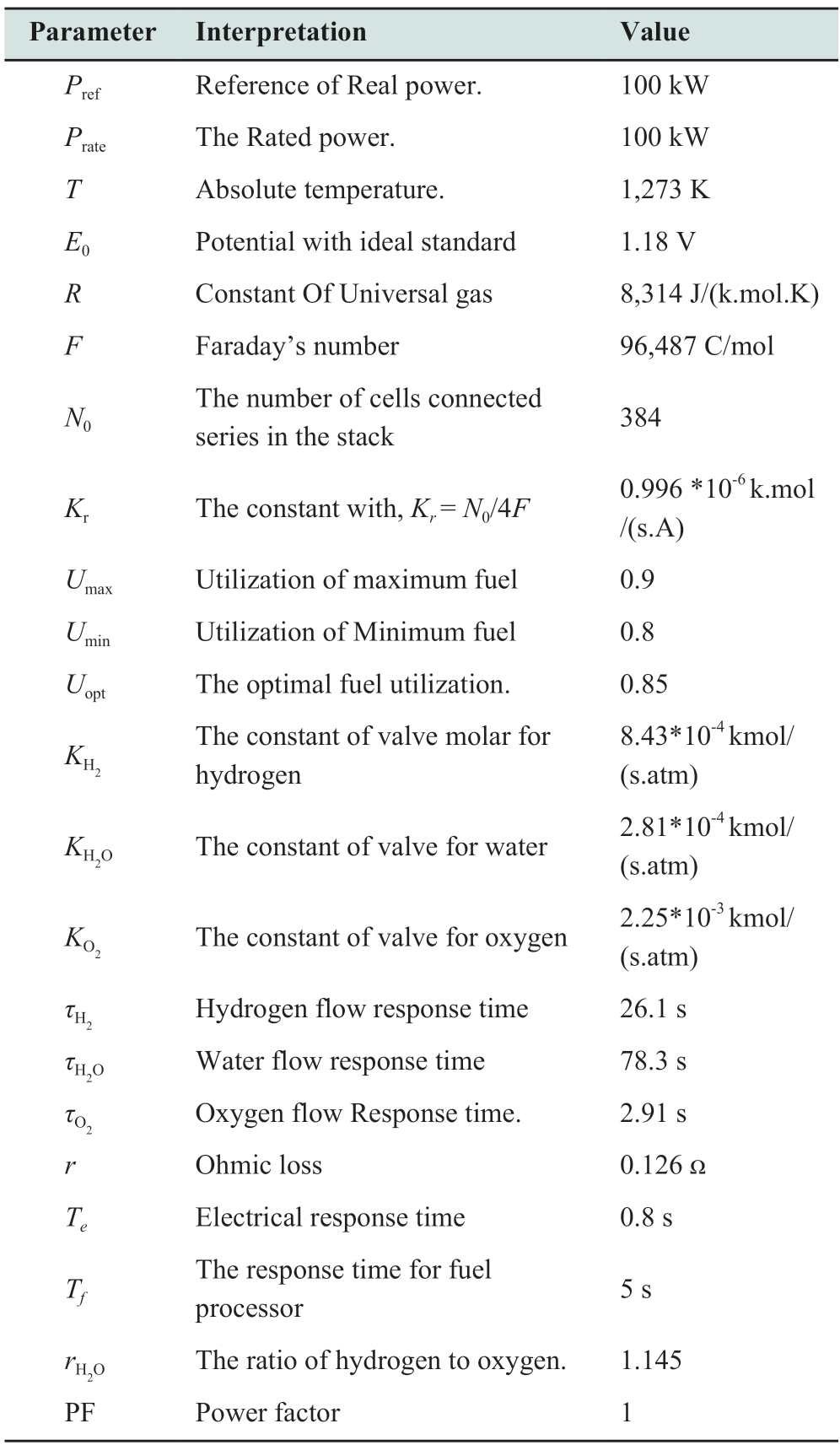
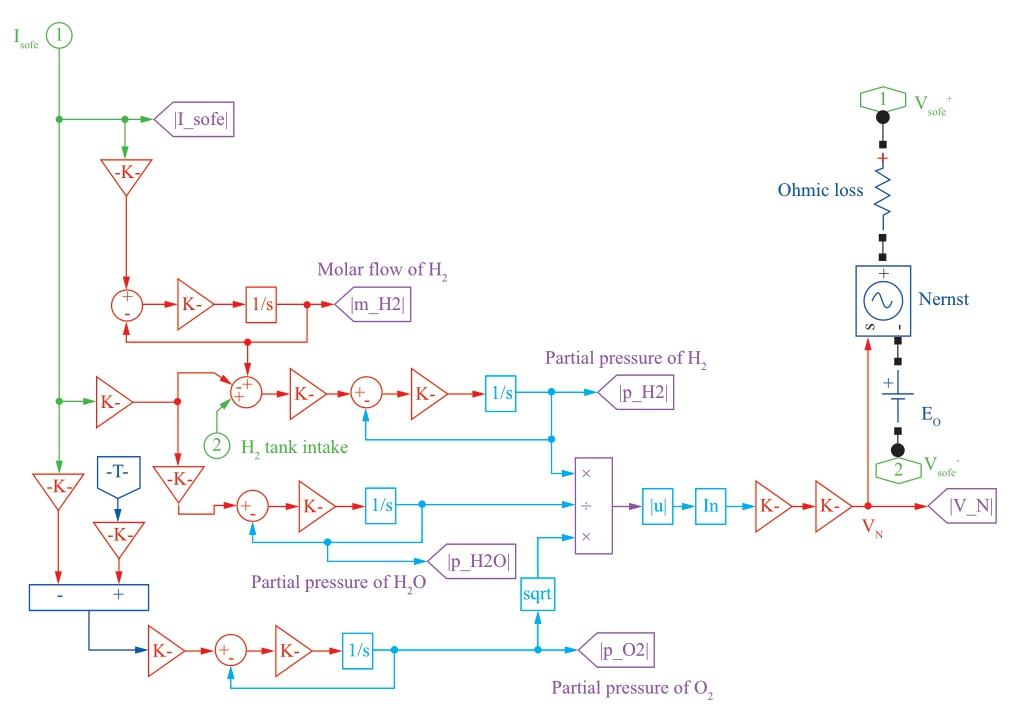
Fig.10 Fuel Cell Model
2 Methodology
The hybrid microgrid operates independently of the main power grid and integrates several technologies.It utilizes Voltage Source Controllers (VSCs) to regulate voltage and current in order to adapt to fluctuating loads,even when the loads fluctuate.A hybrid system must possess the capability to effectively handle fluctuating loads.The objective of developing a VSC control algorithm is to improve the microgrid current performance,achieve load balancing,and operate it with a power factor of unity.The load currents are converted into two-phase static coordinates using a-b-c to d-q-o conversion blocks and signals generated by phase-locked loops (PLL) [24].To maintain synchronization with the supply voltage,the PLL analyzes the angle.The VSC algorithm is intended for active power management.Using the capacitor-fed VSC,the reactive power requirements of the load were met.This is because of known technologies and information from several studies[25,26].The methodology employed in this study utilizes MATLAB/Simulink software to import actual data from the SEKEM WAHAT farm.Including wind speed and solar irradiation,which are utilized to conduct simulations utilizing a proposed model that combines wind turbines with a fuel cell that uses an installed PV system.As it is the current power source in the selected location to circumvent the need for diesel generators and the consequent release of carbon dioxide emissions.The objective is to achieve a renewable energy capacity of 105 kW for the farms.
2.1 PI controller
This study utilizes the Ziegler-Nichols tuning rule to adjust the proportional-integral (PI) controller to attain the desired performance.The Ziegler-Nichols tuning rule,which was proposed by Ziegler and Nichols in the 1940s,is commonly employed to calculate the values of the proportional gain (Kp) and integral gain (Ki) parameters of a PI controller [27].The equations for computing these parameters are as follows.
where Ku and Tu are the ultimate gain and period,respectively.The Ziegler-Nichols tuning rule is based on the observation that the system tends to oscillate at a certain amplitude and period when the proportional gain increases beyond a certain point [28].The ultimate gain, Ku and period Tu,are the values at which the system begins to oscillate.
2.2 PI tuned by Fuzzy Logic controller
The present method of tuning a PI controller focuses on adjusting its scaling factor using a fuzzy system.The use of this fuzzy system enables the adjustment of either the set point of the system or the scaling factor of the traditional PI controller,as shown in Fig.11.

Fig.11 PI tuned by Fuzzy Logic
Table 2 presents the effects of changes in the gain settings on the rising time,overshoot,and settling time of the PI controller.
Table 2 Impacts of the gain of parameters

The classic PI controller utilizes the proportional gain(Kp) and integral gain (Ki),as shown in (15).The input is denoted as Δe,the set point is represented by yr,the system output is denoted as y,and the controller output is denoted as y.The operator frequently adjusts the Kp and Ki values according to variations in the condition.However,the use of a rule-based intelligent fuzzy-coordinate hybrid controller framework improves the performance of the traditional controller across a wider range of operating conditions.These parameters can be adjusted in real time in response to changes without requiring significant input from the operator [27].
Table 3 details the fifteen linguistic fuzzy rules used in the PI control structure’s fuzzy coordination.The linguistic values of each input and output fuzzy variable partition their discourse universe into adjacent intervals.
Table 3 Rules for Fuzzy PI Control Coordination
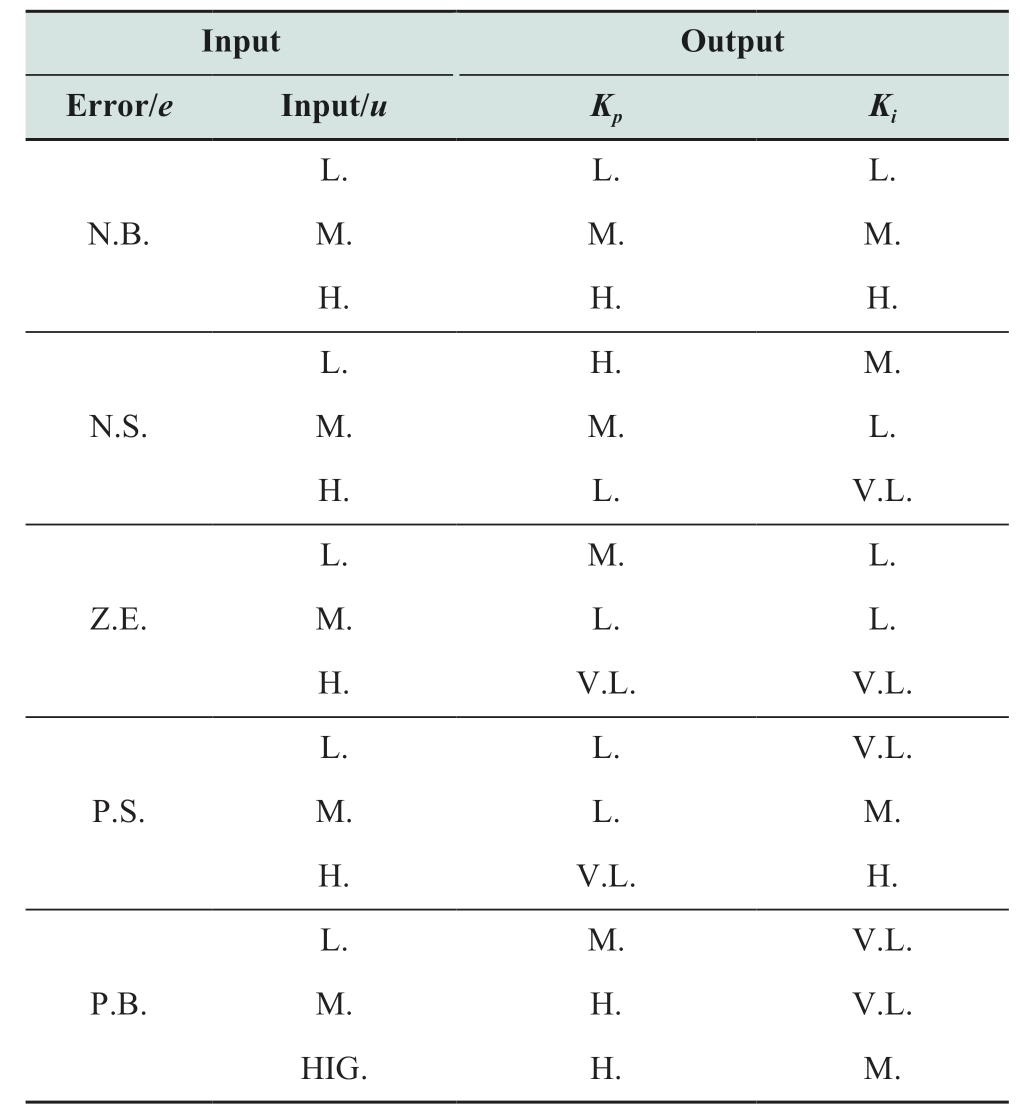
In Fig.12 to Fig.15,the triangular membership functions for the input and output fuzzy variables are observed.These functions had 50% overlap and were initially designed based on experimental data obtained from sensors.However,during the implementation phase,the scaling coefficients for each fuzzy variable are adjusted to match the desired outcomes.

Fig.12 Input error e
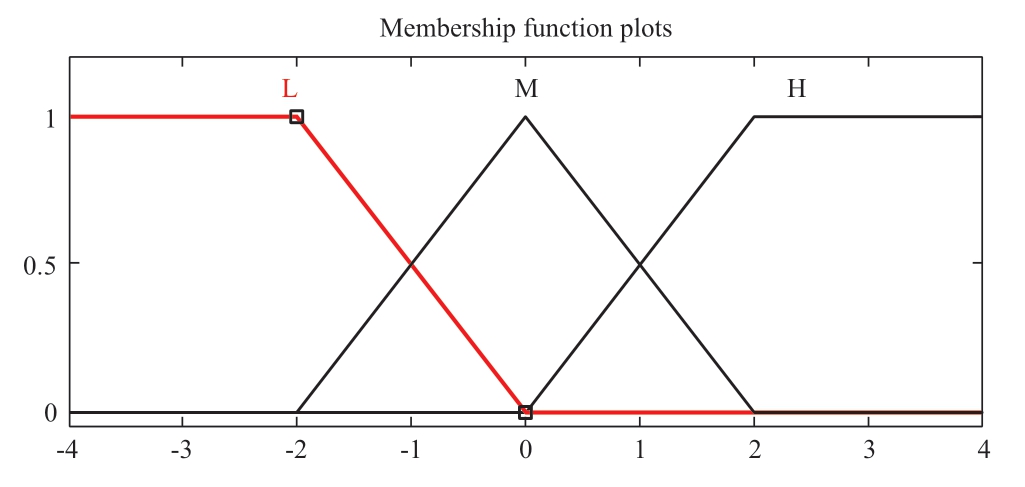
Fig.13 Change of error e`
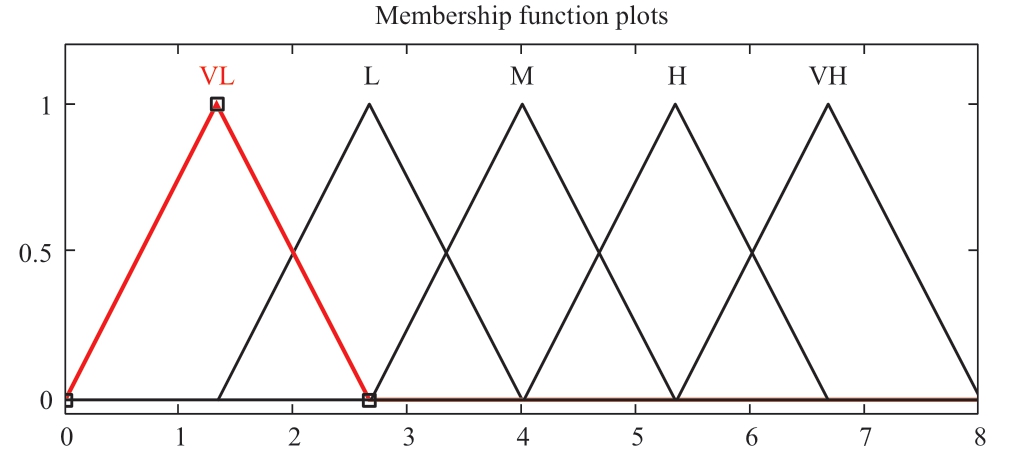
Fig.14 Proportional gain Kp
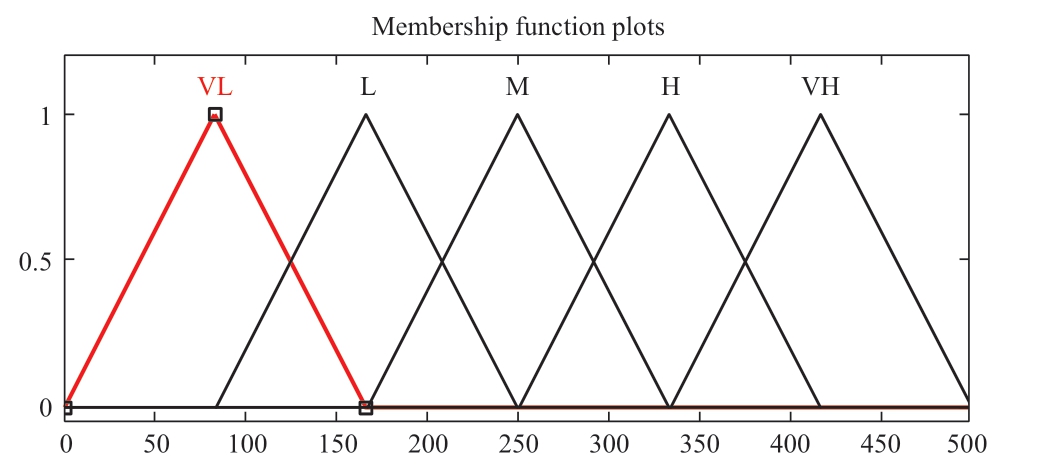
Fig.15 Integral gain
2.3 Neuro Fuzzy controller
The Neuro Fuzzy controller has been used to compare three controller performances to the hybrid system under study.The controller design method for smart grids uses a hybrid control approach that combines neural and fuzzy logic.The hybrid controller was interconnected with the hybrid system in this setup.A controller was developed to manage both the voltage and current of the whole system,allowing control over output [29].
ANFIS,a flexible intelligent control technology,was developed by Jang in 1993.It integrates artificial neural networks (ANN) and fuzzy inference systems (FIS).ANFIS is used to convert a system into if-then rules to handle nonlinear functions.The ANFIS controller is composed of five distinct layers: the fuzzification,rule,normalization,defuzzification,and output as depicted in Fig.16.The mentioned controller was used to regulate voltage and current,because of the main step used to control the neuro fuzzy is train data,and the rules implemented in Fig.17 are the rules of the regulation;similarly for current regulation,Fig.18 rules are followed [6].
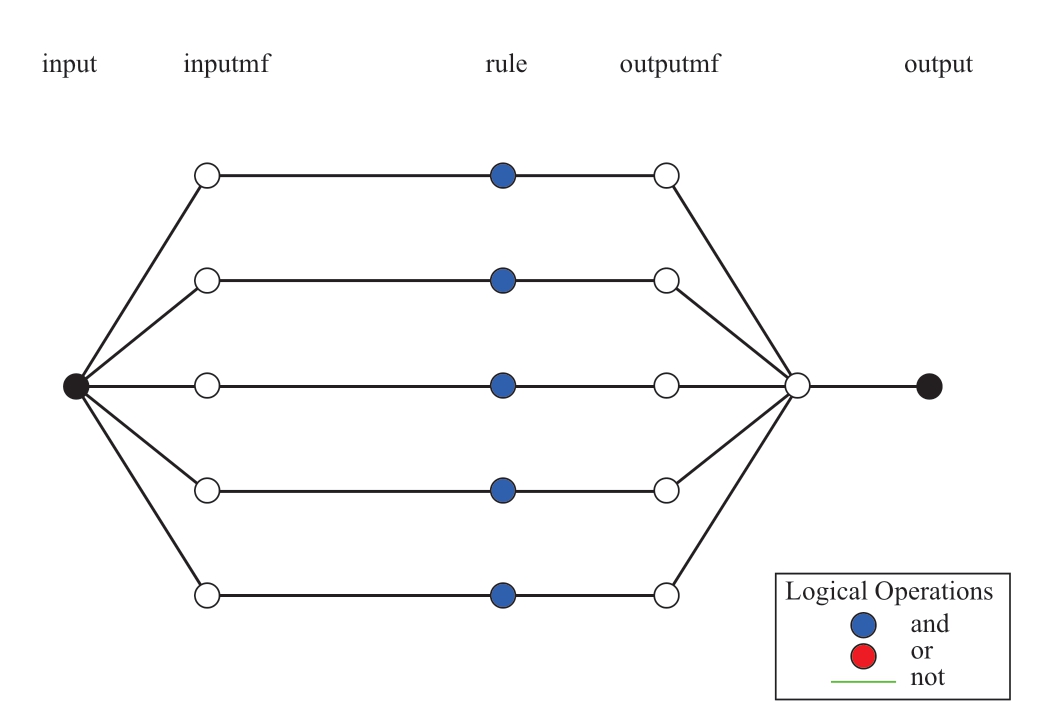
Fig.16 Structure of ANFIS
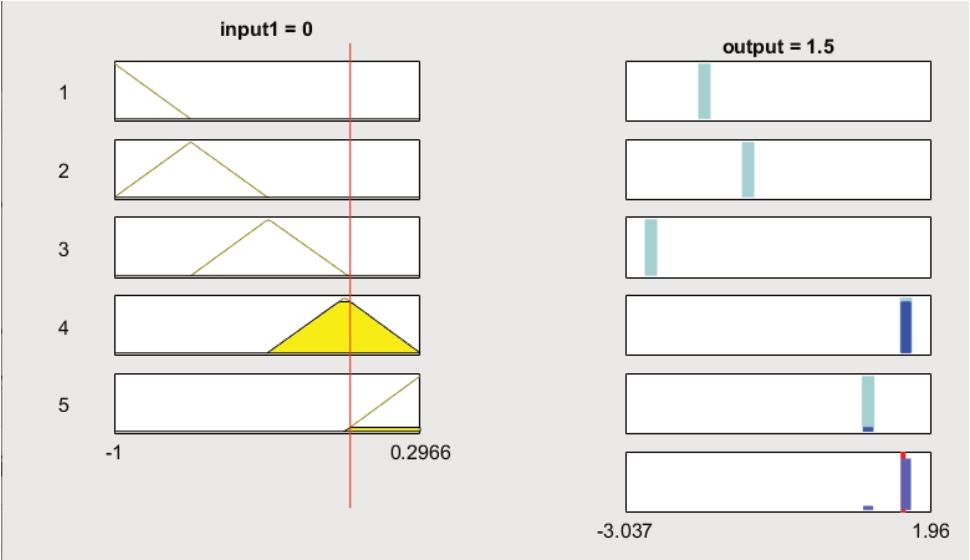
Fig.17 Voltage DC Rules by ANFIS
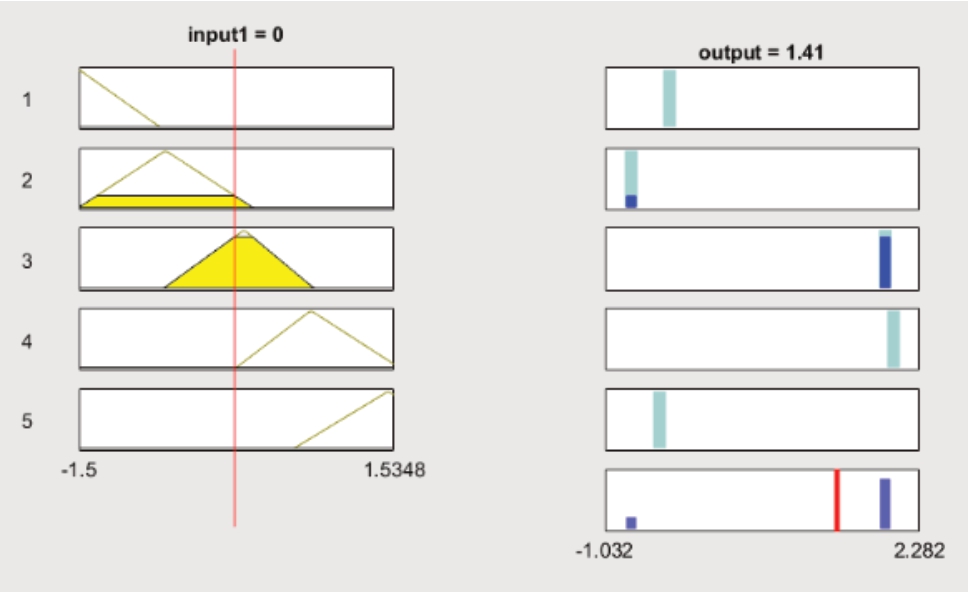
Fig.18 Current rules by ANFIS
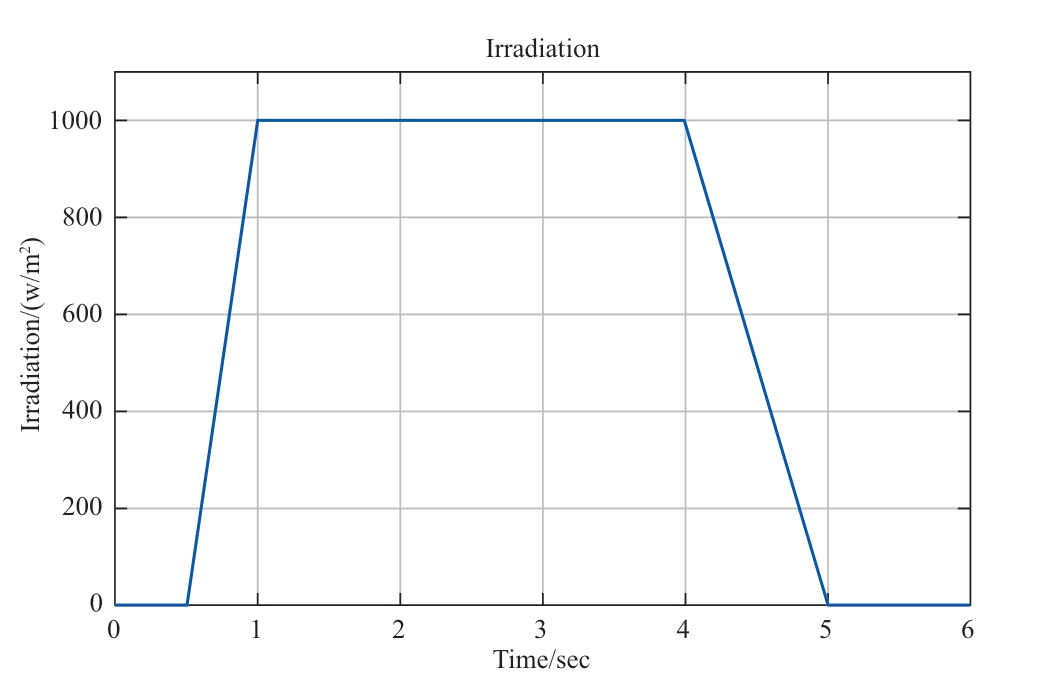
Fig.19 Average of Irradiation data
3 Results and discussion
The case study in the SEKEM WAHAT Farm used the irradiation and wind speed monitored during 2020 -2021.Additionally,it has used MATLAB/SUMLINK to test if the proposed model became a 100% renewable energy system.Controlled by the Neuro Fuzzy,a PI controller,which is tuned by the Fuzzy PI and compared with the Ziegler-Nichols tuning for current and voltage regulator,showed that the system covered the cloudy days (absent of sun radiation).
Figure 19 shows the real irradiation in the chosen location that was already installed for the WAHAT SEKEM hotel as a load,while the power of the installed PV system with respect to the previous figure of irradiation was injected into the system,as shown in Fig.20.
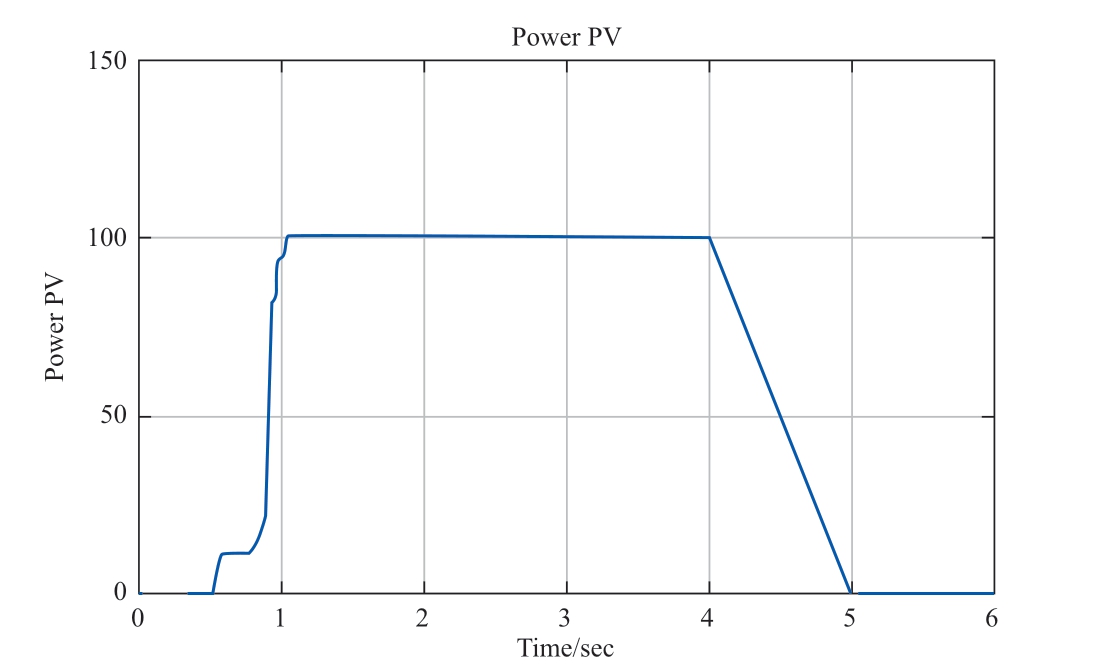
Fig.20 Power of PV
The results presented in Fig.21 show the total power consumed by the system under various control methods.The analysis showed that the PI controller tuned with fuzzy logic exhibited better performance in terms of overshoot time than the standalone PI controller.Specifically,the overshot time of the fuzzy-tuned PI controller is 4.3% lower than the standalone PI controller.Furthermore,the fuzzytuned PI controller also outperformed the Neurofuzzy controller because it reduced overshoot time by 25%.
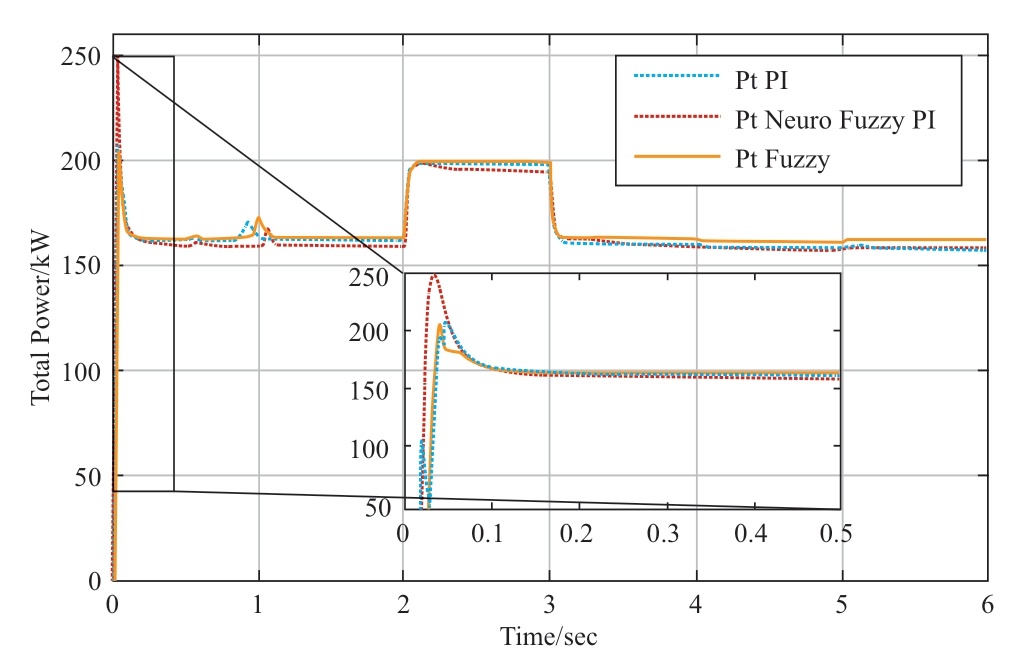
Fig.21 Total power
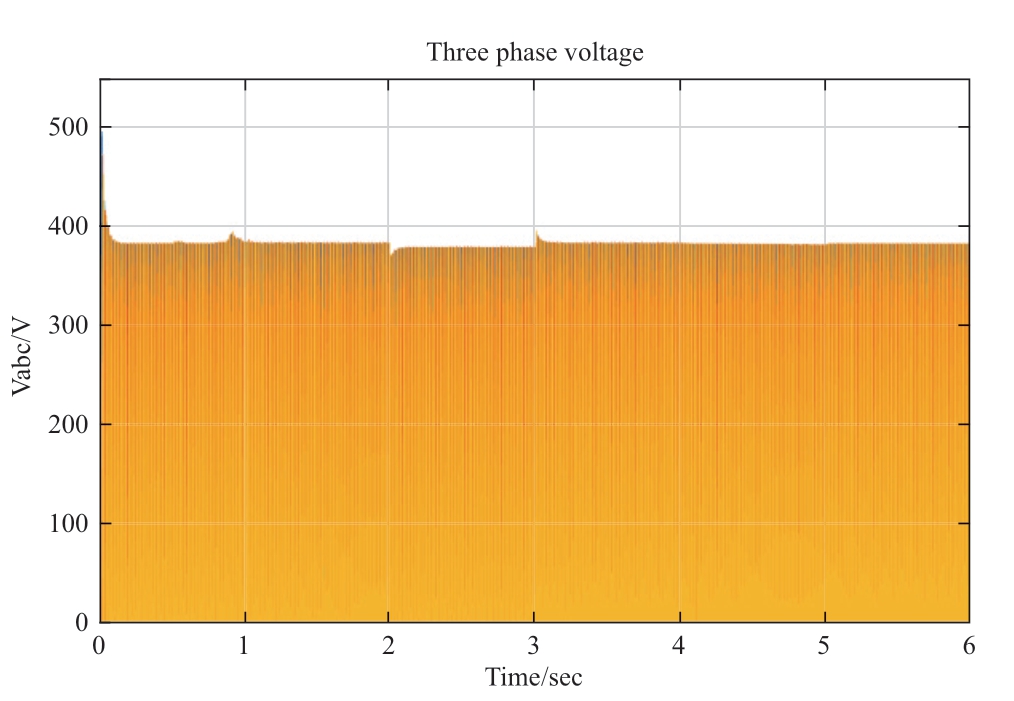
Fig.22 Three Phase Voltage
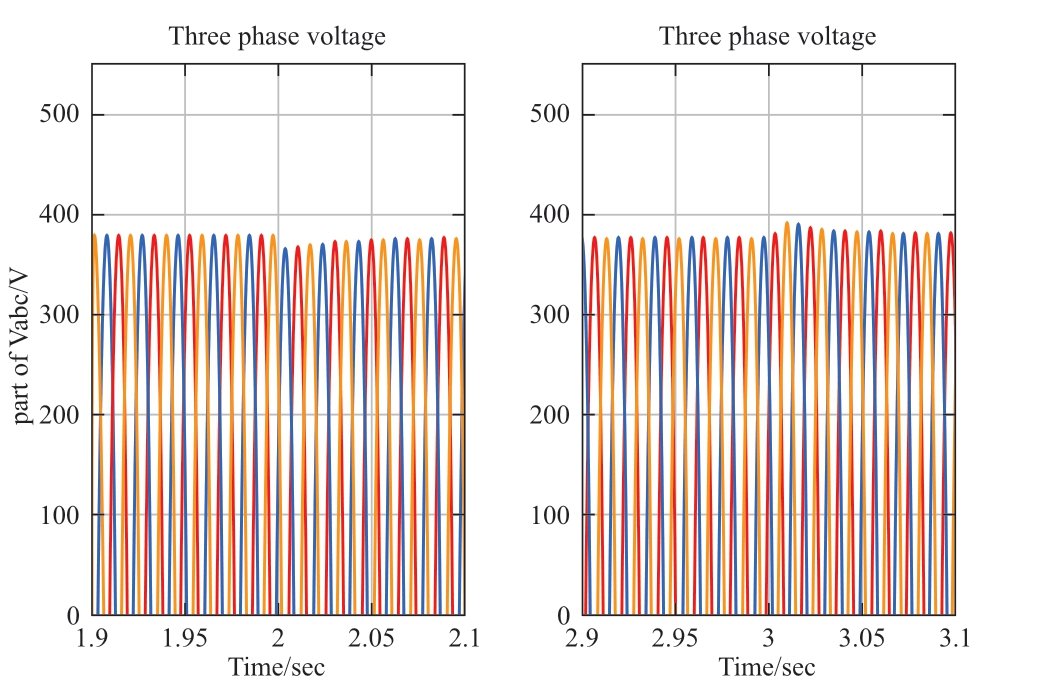
Fig.23 Part of Three Phase Voltage

Fig.24 Three Phase Current

Fig.25 Part of Three Phase Current
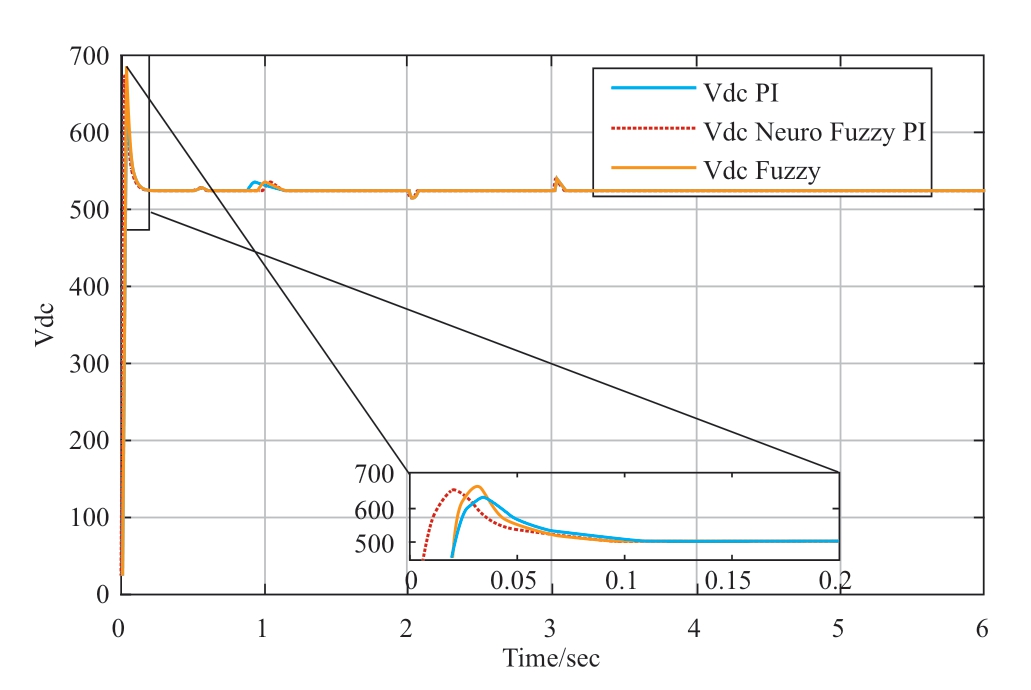
Fig.26 Vdc of the system
Regarding the transient response,the fuzzy-tuned PI controller outperformed the standalone PI controller.However,the neuro-fuzzy controller exhibited a smoother response,despite a higher overshoot time.In addition,during cloudy periods or in the absence of irradiation,fuel cells and wind power can actively recover the power required by the load.
Figure 22 illustrates the three-phase voltage as a stable system with uniform and effectively controlled waveforms.Figure 23 demonstrates the system’s response during a switching load event occurring in between 2 and 3 s in the simulation time.This diagram depicts the dynamic response of the system to load changes,which may lead to voltage waveform fluctuations or transients.
This study examines the specific attributes of the threephase current in the system being analyzed.Figure 24 illustrates the three-phase current as stable,and the current waveforms were uniform and well-controlled.Figure 25 illustrates the system response to the switching load event,which was previously reported to occur between 2 and 3s throughout the simulation duration.This complements the voltage response examination,as discussed previously.This diagram depicts the fluctuating nature of the electric current as the system adjusts to load variations.
Figure 26 illustrates the capacity of the system to sustain a stable DC connection voltage of 500 V despite variations in environmental conditions and load fluctuations.Figure 26 provides additional evidence supporting this finding as it demonstrates the consistent stability of the DC link voltage,even when the system is subjected to a switching load event.The stability of the DC-link voltage is a crucial factor that affects the performance of power systems.This guarantees dependable and effective functioning of many components in a hybrid system.
4 Conclusion
This paper presents a comparative case study of the SEKEM WAHAT Farm.The system was controlled using a Neurofuzzy proportional integral (PI) controller and a Fuzzy PI controller.The hybrid system,which includes solar panels,wind turbines,and fuel cells,was successfully simulated and controlled using a voltage source converter (VSC) inverter that regulates the current and voltage.MATLAB/Simulink was used to test the proposed model and achieve 100% renewable energy systems.An investigation was conducted on different control techniques,including the PI controller,fuzzy PI controller,and neurofuzzy controller,to improve the performance of microgrids and ultimately promote energy reliability and sustainability.Analysis of the results demonstrated the system’s ability to effectively cover cloudy days when solar radiation is absent,with the fuel cell and wind power actively recovering the power required by the load.When comparing the performance of the different control methods,the findings show that the fuzzy-tuned PI controller outperformed both the standalone PI controller and the neuro-fuzzy controller.Specifically,the fuzzy PI controller exhibited a 4.3% lower overshoot time compared with the standalone PI controller and a 25% reduction in overshoot time compared with the neuro-fuzzy controller.Furthermore,this study provides a detailed examination of the three-phase voltage and current waveforms,highlighting the stability and uniform control achieved in the system even under varying environmental conditions and load fluctuations.This study provides strong evidence supporting the viability of incorporating various renewable energy sources into an independent microgrid to meet the energy requirements of the SEKEM farm.The findings from the modeling demonstrate that the hybrid system provides integrated photovoltaic (PV),wind,and fuel cell technologies.Overall,the research findings offer valuable insights into the development and implementation of a 100% renewable energy system,with the fuzzy PI controller proving to be a promising control strategy for ensuring the system’s resilience and superior performance compared to other control methods such as the standalone PI controller and the neuro-fuzzy controller.
Acknowledgment
I would like to extend my sincere gratitude to Sekem Farm for their invaluable support in providing the real data utilized in this research.Their contribution was instrumental in the successful completion of this study.
Declaration of Competing Interest
We declare that we have no conflict of interest.
References
[1] Blechinger P,Cader C,Bertheau P,et al.(2016) Global analysis of the techno-economic potential of renewable energy hybrid systems on small islands.Energy Policy,98: 674-687
[2] Settou B,Settou N,Gouareh A,et al.(2019) GIS-based method for future prospect of energy supply in Algerian road transport sector using solar roads technology.Energy Procedia,162: 221-230
[3] Wang C (2006) Modeling and control of hybrid wind/photovoltaic/fuel cell distributed generation systems.Dissertation,Montana State University
[4] Abouleish H (2020) SEKEM Annual Report 2020,https://sekem.com/wp-content/uploads/2021/06/Annual-report-2020.pdf
[5] Abdelkader C,Moez S,Moncef G J I-S (2007) Comparative study between the conventional regulators and fuzzy logic controller: Application on the Induction Machine,1(2): 17
[6] Ali Akcayol M (2004) Application of adaptive neuro-fuzzy controller for SRM,Advances in Engineering Software,35(3-4):129-137
[7] Al Wahaibi A,Ganat T,Al-Rawahi N,et al.(2024) A novel method for accurate pressure drop prediction in horizontal and near horizontal pipes using adaptive neuro fuzzy inference system based model,Journal of Pipeline Science and Engineering,4(3):100182
[8] Arunachalam R K,Chandrasekaran K,Rusu E,et al.(2023)Economic feasibility of a hybrid microgrid system for a distributed substation.Sustainability,15(4): 3133
[9] Fayek H H,Rusu E (2022) Novel combined load frequency control and automatic voltage regulation of a 100% sustainable energy interconnected microgrids.Sustainability,14(15): 9428
[10] Gao B,Peng C,Kong D Z,et al.(2022) Optimum structure of a combined wind/photovoltaic/fuel cell-based on amended dragon fly optimization algorithm: A case study.Energy Sources,Part A:Recovery,Utilization,and Environmental Effects,44(3): 7109-7131
[11] Younis R A,Ibrahim D K,Aboul-Zahab E M (2019) Power management regulation control integrated with demand side management for stand-alone hybrid microgrid considering battery degradation.International Journal of Renewable Energy Research,9(4): 1912-1923
[12] El-Hady A A,Arafa S H,Nashed M N,et al.(2015) Modeling and simulation for hybrid of PV-wind system.International Journal of engineering Research and Applications,4(4): 178-183
[13] Dhanowa A,Garg V K (2015) Modeling and simulation of an off grid PV system for with battery backup for remote and rural area network.International Journal of Engineering Research Technology,4(6): 1-8
[14] Samal S,Hota P K (2017) Design and analysis of solar PV-fuel cell and wind energy based microgrid system for power quality improvement.Cogent Engineering,4(1): 1402453
[15] Seoudy H M,Saadeldin M A,Mohamed W A (2022) Design and implementation of optimal controller for DFIG-WT using autonomous groups particle swarm optimization.International Journal of Power Electronics and Drive Systems,13(3): 1813-1821
[16] Akhmatov V (2003) Variable-speed wind turbines with doublyfed induction generators part III: Model with the back-to-back converters.Wind Engineering,27(2): 79-91
[17] Dali M,Belhadj J,Roboam X,et al.(2007) Control and energy management of a wind-photovoltaic hybrid system.Proceeding of 2007 European Conference on Power Electronics and Applications,Aalborg,Denmark,pp: 1-10
[18] Marocco P,Ferrero D,Lanzini A,et al.(2022) The role of hydrogen in the optimal design of off-grid hybrid renewable energy systems.Journal of Energy Storage,46: 103893
[19] Zhu Y,Tomsovic K (2002) Development of models for analyzing the load-following performance of microturbines and fuel cells.Electric Power Systems Research,62(1): 1-11
[20] Padulles J,Ault G W,McDonald J R (2000) An integrated SOFC plant dynamic model for power systems simulation.Journal of Power Sources,86(1-2): 495-500
[21] Jadhav D,Thakare M (2022) Mathematical modeling and simulation of a fuel cell in MATLAB.Proceedings of the 3rd International Conference on Contents,Computing &Communication
[22] Khan M J,Iqbal M T (2005) Dynamic modeling and simulation of a small wind-fuel cell hybrid energy system.Renewable Energy,30(3): 421-439
[23] Forrai A,Funato H,Yanagita Y,et al.(2005) Fuel-cell parameter estimation and diagnostics.IEEE Transactions on Energy Conversion,20(3): 668-675
[24] Gupta S,Garg R,Singh A (2020) ANFIS-based control of multiobjective grid connected inverter and energy management.Journal of the Institution of Engineers: Series B,101(1): 1-14
[25] Singh B,Jayaprakash P,Kothari D P (2011) New control approach for capacitor supported DSTATCOM in three-phase four wire distribution system under non-ideal supply voltage conditions based on synchronous reference frame theory.International Journal of Electrical Power &Energy Systems,33(5): 1109-1117
[26] Gupta S,Garg R,Singh A (2017) Modeling,simulation and control of fuel cell based micro grid.Journal of Green Engineering,7(1): 129-158
[27] Zhao Z Y,Tomizuka M,Isaka S (1993) Fuzzy gain scheduling of PID controllers.IEEE Transactions on Systems,Man,and Cybernetics,23(5): 1392-1398
[28] Hassan F,Fayek W,Seoudy H M,et al.(2013) Speed regulation of brushless DC drives using optimized fuzzy logic controller.Proceedings of 15th International Conference on Aerospace Sciences &Aviation Technology,15: 1-13
[29] Sathish C,Chidambaram I A,Manikandan M T (2023) Intelligent cascaded adaptive neuro fuzzy interface system controller fed KY converter for hybrid energy based microgrid applications.Electrical Engineering &Electromechanics,1: 63-70

Scan for more details
Received: 22 November 2023/ Accepted: 5 May 2024/ Published: 25 December 2024
 Hatem M.Seoudy
Hatem M.Seoudy
h.seoudy@sha.edu.eg
Mohamed.M.Reda
Mohamed.Mohamady@muc.edu.eg
Mohamed I.Elsayed
d_eng2009@yahoo.com
M.A.Moustafa Hassan
mmustafa@eng.cu.edu.eg
2096-5117/© 2024 Global Energy Interconnection Group Co.Ltd.Production and hosting by Elsevier B.V.on behalf of KeAi Communications Co.,Ltd.This is an open access article under the CC BY-NC-ND license (http://creativecommons.org/licenses/by-nc-nd/4.0/).
Biographies

Mohamed.M.Reda is an Assistant Lecturer in the Electrical and Electronics program at May University,specializing in Electrical Power and Machines with a focus on Renewable Energy Applications.He has been with the prestigious Renewable Energy Department at the Faculty of Engineering,Heliopolis University in Cairo,for eleven years.Mohamed earned his bachelor’s degree in Electrical Power and Machines from The Higher Institute of Engineering and Technology in 2012.His dedication to academic excellence is further highlighted by an Entrepreneurship Diploma from the Euro-Mediterranean University of Slovenia (2018)and a master’s degree from Ain Shams University (2019),where he studied the “Optimal Design of Transformer-less Grid-Connected PV Inverters.” Currently pursuing his Ph.D.,Mohamed is committed to fostering an entrepreneurial mindset among his students,encouraging them to transform inventive ideas into tangible products.His extensive expertise in Renewable Energy Applications and his dedication to education make him a respected figure in his field.
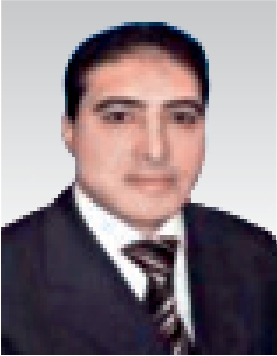
Mohamed I.Elsayed,received a Bachelor in Electrical Engineering power and machine department from Al-Azhar University,Cairo,Egypt in 1996,a Master of Engineering in Power Electronics and doing Ph.D.in power system stability from Al-Azhar University,Egypt.Now he is working as professor in the department of Electrical Engineering and the Deputy Dean Faculty of engineering (Girls) Al-Azhar University,Cairo,Egypt.His field of interest is Smart Grid,Power System management,power quality and Artificial Intelligence Applications to Power System.
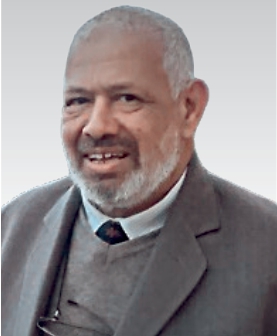
Mohamed A.Moustafa Hassan (S.Member IEEE) received his B.Sc.,M.Sc.,and Ph.D.in Electrical Engineering from Cairo University in 1977,1982,and 1988,respectively.He has been a faculty member at Cairo University’s Electrical Engineering Department since 1977.During his Ph.D.research,he spent time at BUGH-Wuppertal,Germany,funded by DAAD,and later was a Visiting Scholar at the University of Calgary,Canada,funded by CIDA.Currently,he is a Professor of Control of Power Systems at Cairo University and the Chairperson of the Electromechanics Department at Heliopolis University.His research focuses on Control Systems,Fuzzy Logic,ANN,and AI techniques in power system protection and control.He has published 161 papers in international journals and conferences,supervised numerous graduate theses,and provided practical consultations in automation and renewable energy.He has also offered training courses and attended scientific conferences globally.

Hatem M.Seoudy received his B.Sc.degree from the Higher Institute of Engineering,El Shorouk Academy,Cairo,Egypt,in 2005,the M.Sc.degree from the Faculty of Engineering,Helwan University,Egypt,in 2010,and the Ph.D.degree from the Faculty of Engineering,Alazhar University,Egypt,in 2016.He is currently an Assistant Professor at the Department of Electrical Engineering,Higher Institute of Engineering,ElShorouk Academy.His research interests include smart grids,control system,artificial intelligence,electrical drives,renewable energy,and optimization techniques.
(Editor Zedong Zhang)
